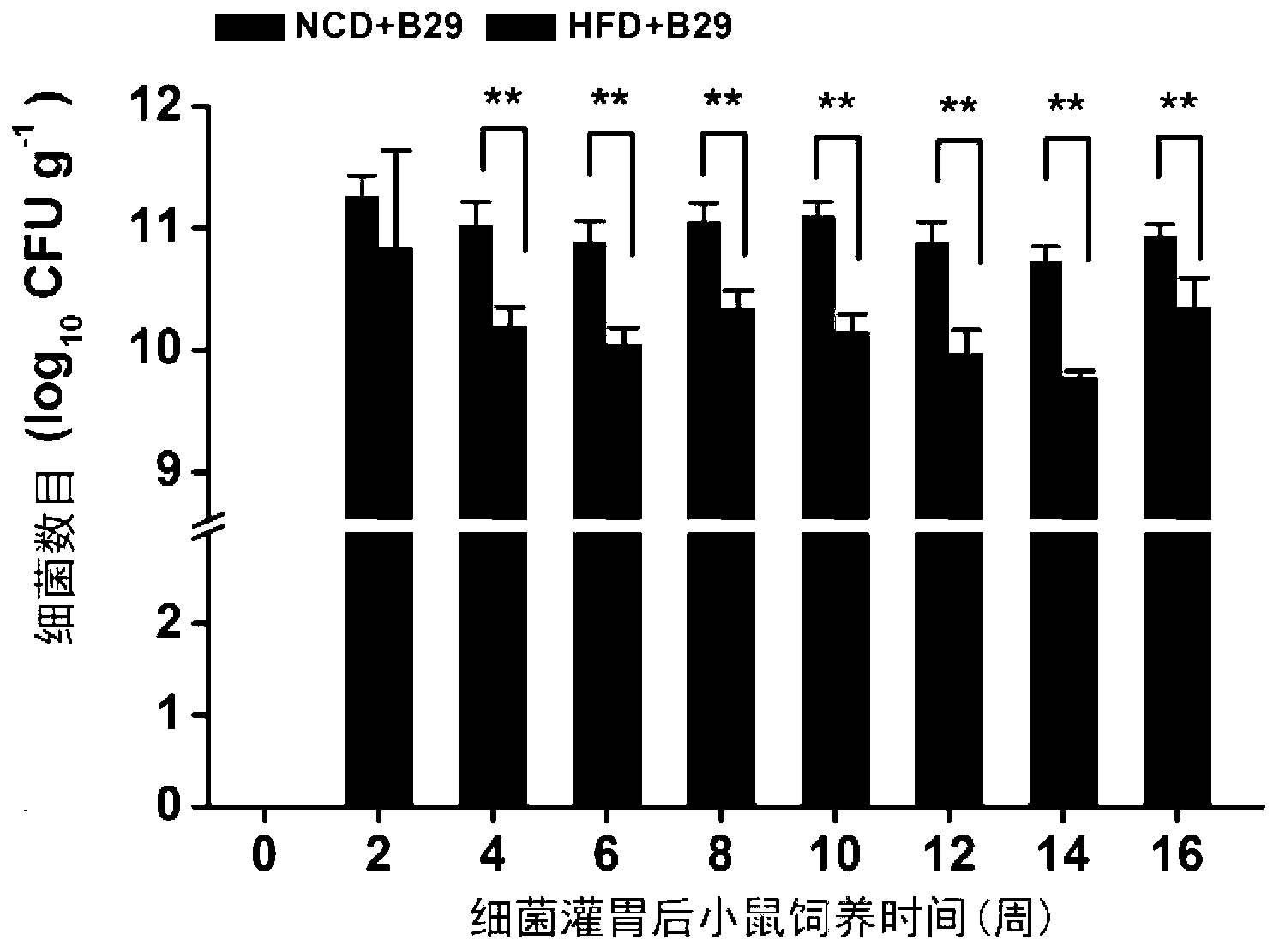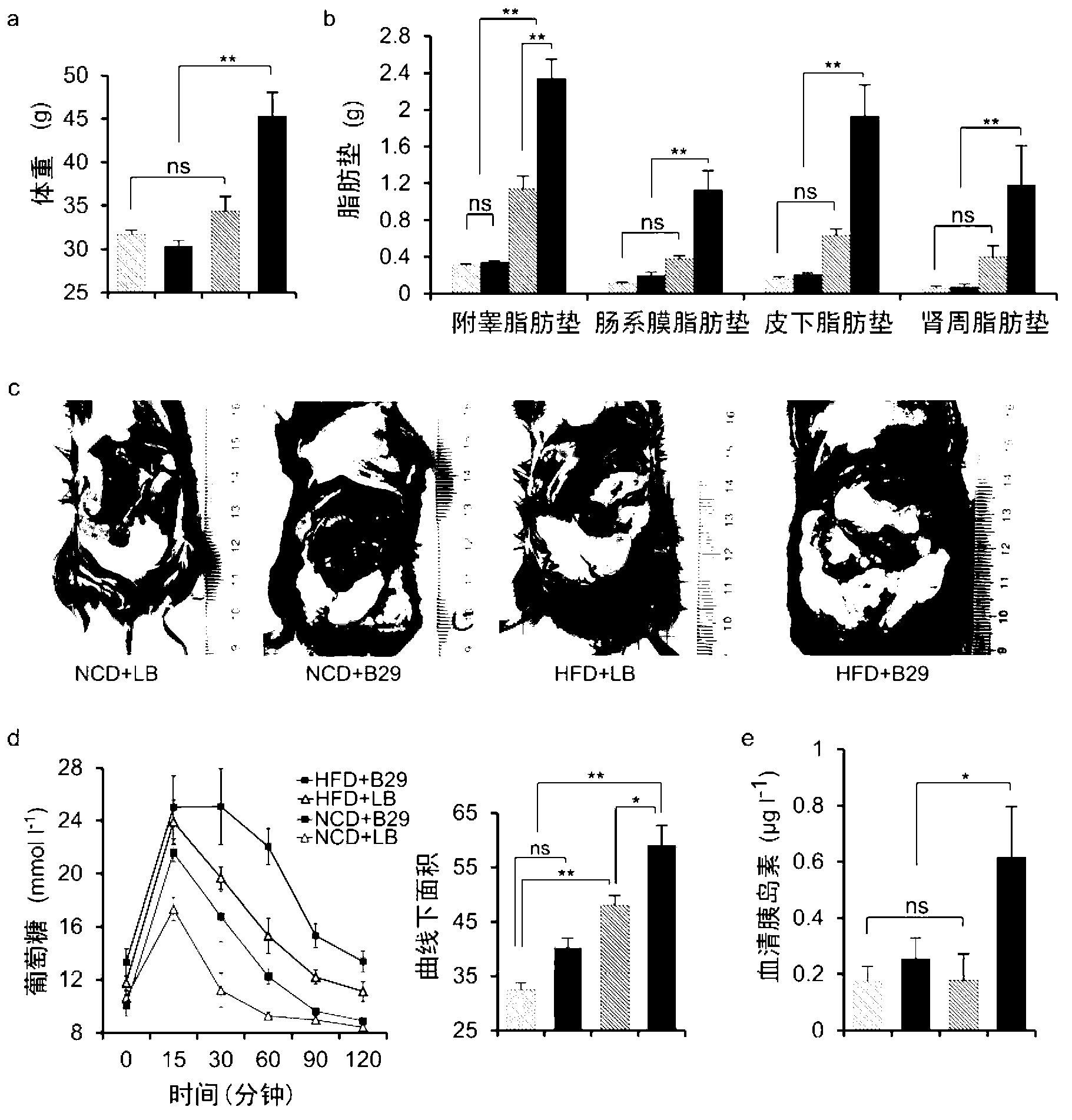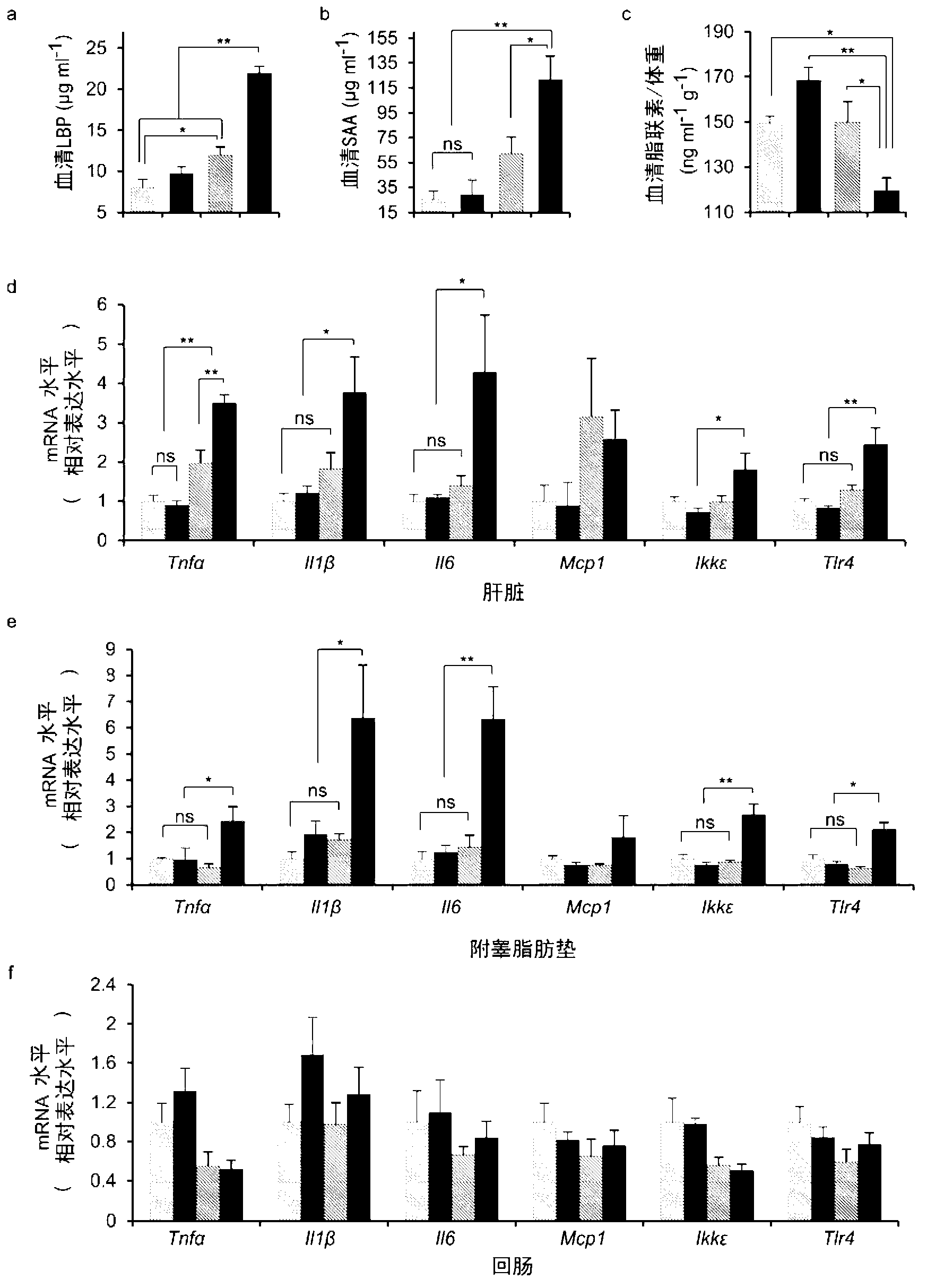Method of establishing gnotobiotic animal obesity model and application of model
An obese model, a technology of living animals, which is applied in the field of constructing obesity models of living animals, and can solve problems such as not very clear, unclear mechanism, etc.
- Summary
- Abstract
- Description
- Claims
- Application Information
AI Technical Summary
Problems solved by technology
Method used
Image
Examples
Embodiment 1
[0029] Example 1: Isolation and identification of Enterobacter cloacae B29 strain
[0030] Analysis of the intestinal flora of obese people found that the structure of intestinal flora in most severely obese patients is seriously unbalanced. For example, an extremely obese volunteer (26 years old, male, Han nationality, weight 174.9kg, BMI 58.78kg / m2) The proportion of Enterobacter in the intestinal flora structure of) is as high as 35% (16S rRNA gene clone library analysis). At the same time, the physical examination data also showed that the volunteer had severe metabolic syndrome. The volunteer underwent a 23-week nutritional intervention (composition: whole grains, foods from the same source of medicine and food, and prebiotics). After 9 weeks, the volunteer's weight dropped by 30.1kg, and after 23 weeks, it dropped by 51.4kg. The symptoms of the disease have also improved. The analysis of the intestinal flora showed that the proportion of Enterobacter in the intestinal flor...
Embodiment 2
[0038] Example 2 Strain B29 was stably colonized in the intestinal tract of sterile mice.
[0039] During the experiment, fresh stool samples were collected every two weeks, immediately weighed accurately, and diluted 10-fold with sterile 0.01M phosphate (PBS) buffer. The formula of 0.01M phosphate (PBS) buffer is as follows: 135mM sodium chloride (NaCl), 2.7mM potassium chloride (KCl), 1.5mM potassium dihydrogen phosphate (KH 2 PO 4 ), and 8mM dipotassium hydrogen phosphate (K 2 HPO 4 ), pH 7.2. Spread 100 μl of the suspension on an LB plate, culture at 37°C for 16 hours, and count the colonies. The results showed that the density of Enterobacter cloacae B29 strain in the fecal samples of model mice (ie high-fat diet+B29) and normal diet+B29 mice during the experiment period (0-16 weeks) could reach 10 10 -10 12 / g wet weight stool sample, showing that Enterobacter cloacae B29 strain can be stably colonized in the intestinal tract of sterile mice (see figure 1 ).
[0040] Based o...
Embodiment 3 29
[0041] Example 3 B29 strain causes obesity and insulin resistance in sterile mice with high fat diet.
[0042] During the experiment, the body weight of each mouse was measured once a week and accurately weighed with an electronic balance (d=0.01). In the 16th week of the experiment, the mice were given oral glucose (2g / kg body weight) after fasting for 5 hours, and blood was taken from the tail-tip vein before taking glucose (0 minutes) and at 15, 30, 60 and 120 minutes after taking glucose. , Immediately use the Roche blood glucose meter to measure the blood glucose concentration for oral glucose tolerance test. After taking glucose for 120 minutes, collect a 50μl blood sample from the eye socket, leave it at room temperature for 1 hour, 3000 revolutions / separate the heart for 15 minutes, collect the serum, use an ELISA kit (Mercodia, Uppsala, Sweden) to detect the blood insulin content, 2 hours after the meal Determination of insulin levels. After 16 weeks of the experiment,...
PUM
 Login to View More
Login to View More Abstract
Description
Claims
Application Information
 Login to View More
Login to View More - R&D
- Intellectual Property
- Life Sciences
- Materials
- Tech Scout
- Unparalleled Data Quality
- Higher Quality Content
- 60% Fewer Hallucinations
Browse by: Latest US Patents, China's latest patents, Technical Efficacy Thesaurus, Application Domain, Technology Topic, Popular Technical Reports.
© 2025 PatSnap. All rights reserved.Legal|Privacy policy|Modern Slavery Act Transparency Statement|Sitemap|About US| Contact US: help@patsnap.com



